Wall material and the sound of the flute
Extract from a master's thesis:
Linortner, Renate (2001)
Silber, Gold, Platin... Der Materialaspekt bei Querflöten: Spiel- und Hörtests, Umfragen und Klanganalysen.
Institut für Wiener Klangstil (IWK), Universität für Musik und darstellende Kunst Wien (MDW). 
This short version is limited to dynamic and sound analyses. The full version in PDF format also contains extensive data on material compositions and reports on material analyses of existing flutes.
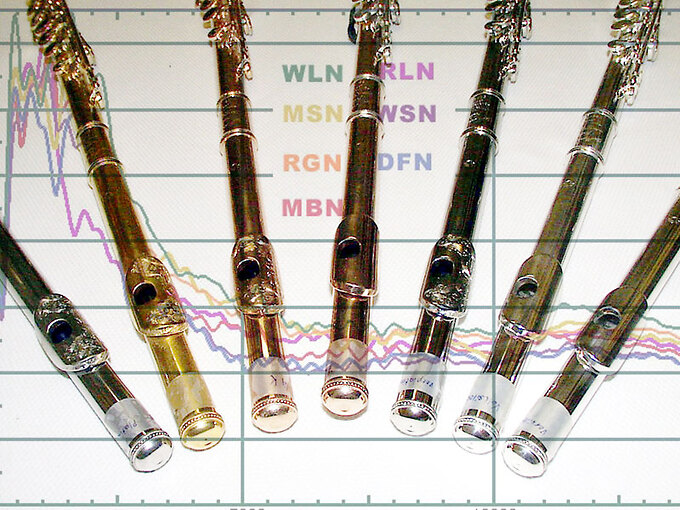
Abstract
The discussion on the influence of the material of wind instruments on the sound color is unending. While acousticians speak mostly of a negligible influence, players are convinced that the material highly influences the color of the radiated sound. This paper reports on experiments done with 7 different flute materials and 110 testpersons, where the price of the instruments is between € 3,000.- and € 73,000.- (!). Double blind tests and statistical analysis showed players‘ and listeners´stereotyped ideas on that matter and the non-recognizability of the used material. Sound analysis pointed out big differences in the sound level and sound color of played tones caused by the player and just measurable but not perceivable differences (< 0,5 dB) in sound color caused by the material.
Introduction
The role that the wall material plays in determining the tone quality of flutes has long been a subject of argument. Laboratory measurements of sustained tones in artificially blown wind instruments made by J. Backus in the 1960’s [1,2] generally showed no evidence that the wall material has an appreciable effect. But players and instrument makers didn’t accept these results because of the fact that the instruments were artificially blown. Therefor J. W. Coltman worked out an experiment with flutes made of three different materials (silver, copper and wood) and with different wall thickness. They were blown by the author himself and four different professional flutists [3]. The experiment was completed by listening test with 27 observers. The result of statistical analysis was that “no evidence has been found that experienced listeners or trained players can distinguish between flutes . . . whose only difference is the nature and thickness of the wall material of the body, even when the variations in the material and thickness are very marked.” Nevertheless instrument makers, players and listeners continue to insist that the nature of the wall material does indeed have an effect on the instruments’sound. Perhaps, from the point of view of flutists, there is a stigma attached to J. Coltmans´ experiment: the flutes where built especially for this experiment and without any keywork.
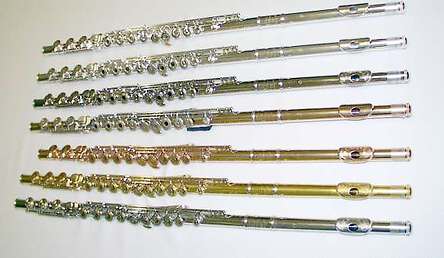
Fig. 1: The test instruments
To terminate this discussion once and for all (which, as J. Backus pointed out [4], probably started in early Stone Age circles with assertions that a flute made from a human thigh bone had a much better tone than one made from a stick of bamboo), we chose seven identical flutes made by Muramatsu which only differ in the wall material and could be purchased by everybody (Fig.1).
Experimential Setup
A silver coated, full silver, 9 carat gold, 14 carat gold, 24 carat gold, platinum coated and all-platinum flute was played by 7 professional flutists (members of Viennese orchestras including the Vienna Philharmonic orchestra) in an anechoic chamber. The recorded sound material: a chromatic scale over 3 octaves (c4-c7) instruction: convenient forte, a crescendo up to fff and a decrescendo up to ppp on the single notes a4, f5, d6 and bb6, the famous solo from Carmen (Bizet) and the solo of the 1st Symphony of J. Brahms.
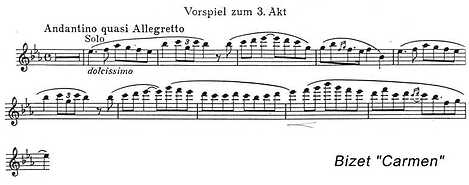
Fig. 2: Bizet, Carmen W. Schulz on the platinum-flute
The sound material was analyzed and prepared for a listening test with 15 experienced professional flute players including the seven test players. An additional opinion survey was done on the question of the influence of the material on the sound, response and if there is any relationship between the wall material and the soundcolor of a flute with 111 persons.
Results
A good estimation of the influence of the player and the material on the radiated sound gives an RMS of the played chromatic scale. Differences are rather seen between the players whilst those between the instruments are extremely small. This implies that flute players can realise their subjective imagination of “a good sounding” to a far extent independently of the instrument.

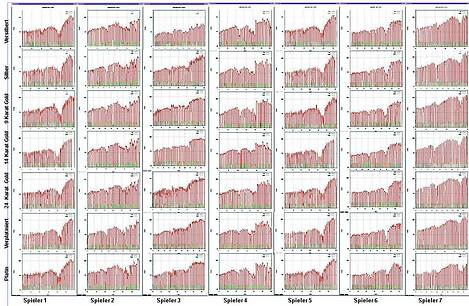
Fig. 4: Soundlevel of the played chromatic scale (seven players with seven flutes)
The individual diagrams (Fig. 4) show the level of each individual tone. The time or tones are plotted on the horizontal axis (approx. 30-40 seconds for the 36 tones played) and the sound pressure in decibels on the vertical axis. The time axis is strongly compressed (compressed) for display reasons, so that each individual tone (which consists of the beginning of the tone, the part lasting approx. one second and the end of the tone) only appears as a ‘peak’.
If one considers the diagrams of all players with all flutes, it is immediately apparent that the differences are not between the flutes, but between the players! The diagrams of one player with all instruments are very similar and differ only marginally from each other (vertical row in Fig. 4). However, if we look at the horizontal row (all players with one flute), we find significant differences. This leads to the conclusion that flutists can successfully realise their individual idea of the shape of an ‘ideal sound’ largely independently of the type of instrument used.
This conclusion is also supported quite impressively by the phenomenon of ‘sick tones’. The term ‘sick notes’ is usually used to describe notes that are produced with an extremely short air column (all or almost all tone holes are open). These are the notes just before overblowing. These notes emit less sound energy and are also more difficult for the player to control. If you look at the diagrams, you can clearly see that regardless of the instrument, the cuts in the sound level curve are in the same place and have the same shape for the same player. Some people try to compensate for this effect with their playing technique, but for others it has a full impact.
| pp | ff | |
| a4 | 69-80 dB | 82-92 dB |
| f5 | 66-83 dB | 81-96 dB |
| d6 | 72-86 dB | 88-100 dB |
| bb6 | 72-95 dB | 85-107 dB |
The recorded crescendos on the four individual notes were used to determine the dynamic range - the largest range between the quietest and loudest possible tone. Each note represents a register, only for the high register two notes were taken (d3 and b3), the b3 stands for a normally playable note, the d3 for a typical ‘problem note’. The table Tab.1 shows the ranges within which the absolute values move.
Dynamic range of the indivudual players
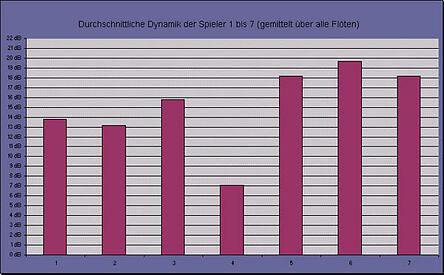
Fig. 5: Individual dynamic range of each player (four notes played with all flutes)
Figure 5 shows the mean value of all players and four notes of the low, middle and high register for each instrument. The difference of the instrument with the smallest dynamic range (14 carat gold flute = 14.57 dB) and that with the largest range (platinum flute = 16.14 dB) is only 1.5 dB! The possibility that this difference becomes zero with an increased number of test players can not be excluded.
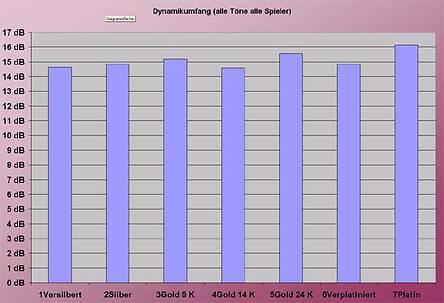
Fig. 6: Individual dynamic range of each player (four notes played with all flutes)
The situation is completely contrary to this if you look at the dynamic range as a function of the instrument. Figure 6 shows the averaged values across all 7 players and the 4 tones for each individual instrument. The values range between 14.57 dB for the lowest dynamic range (14 carat gold flute) and 16.14 dB for the highest dynamic range (platinum flute). The difference is therefore only 1.57 dB, which is a factor of about 1.2. Incidentally, this is the only case in which a common cliché, namely the opinion that a platinum flute can achieve greater dynamics and a higher volume, is objectively confirmed by measurement. However, the difference is only 1.5 dB, although it cannot be ruled out that with a larger number of players (around 20-30) the difference between the instruments will be close to zero.
Sound analyses
In order to determine whether there is a difference in sound between the individual flutes regardless of the players, a sound spectrum could be calculated from all 1764 notes (36 notes x 7 players x 7 instruments) of the recorded chromatic scales and compared with the others. A simpler and equally effective method is that of an ‘averaged spectrum’. This involves calculating a spectrum across all the notes of all the musicians on an instrument. This means that only 7 spectra need to be compared with each other and the influence of the players on the sound is eliminated, as it is equally present in all instruments.
The prerequisite for this method, however, is that all tones are of the same length and volume. The spectral components of a note sustained longer or played louder by a musician would be given a higher weight in the joint spectrum and thus distort the result. For this reason, only the middle part with a length of 0.5 seconds was cut out of all the tones and used for the analysis, and the RMS level of all these segments was normalised (brought to the same value).
Figure 7 shows the spectra of all seven instruments superimposed on each other. For the sake of clarity, the envelopes are shown in smoothed form. It can be clearly seen that the difference in sound caused by the material lies within a bandwidth of less than 0.5 dB in the entire audible range up to 16 kHz. A difference that is no longer perceptible to the listener!
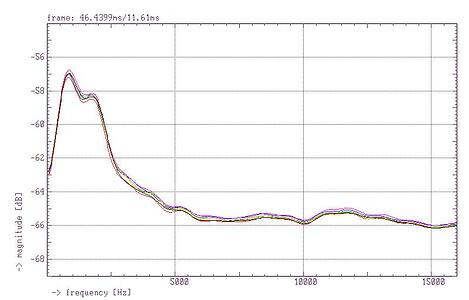
The sound examples below give an idea about the influence of the material. One player plays a note with all flutes. The sequence is: silver coated, full silver, 9 carat, 14 carat, 24 carat gold, platinum coated and all platinum.
player 1, note e1 flat on all flutes
player 2, note g2 on all flutes
player 1, note g3
The mean spectra for each player show the opposite situation (differences up to 7 dB, Fig. 8).
seven players on one instrument
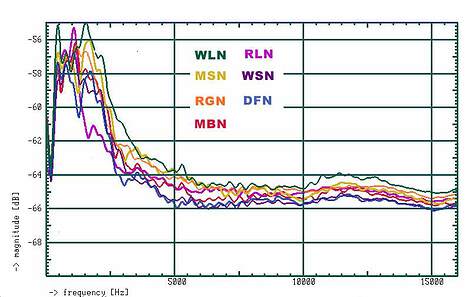
Listening tests
There were two tests made: in TEST A, the Carmen solo and the Brahms solo was presented (from a CD), at first from Player 1 with all instruments, then Player 2 with all instruments and so on. The test persons had to guess the instrument. The result was interesting: no instrument was identified correctly. The best value was that for the 24 k Gold flute: only 22% of the test persons identified it as a 24 k Gold flute. Whereas the wrong allocations had much higher values: 34% identified the Platinum flute as a 9 k Gold flute (only 6.8% identified it correctly) and 32% thought that the 14 k Gold flute is the Platinum flute (11.3% were right)!
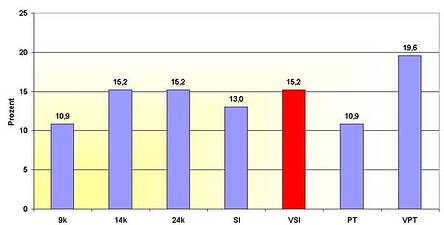
 9 carat gold flute
9 carat gold flute
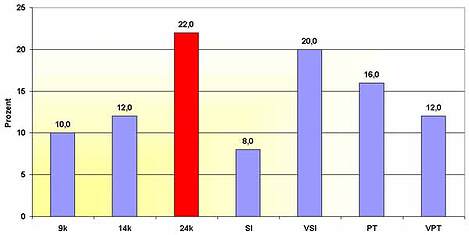 24 carat gold flute
24 carat gold flute
 ful silver flute
ful silver flute
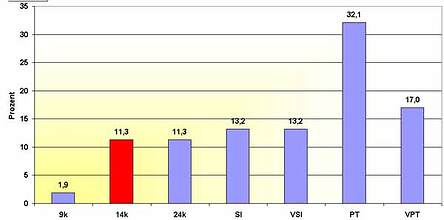 14 carat gold flute
14 carat gold flute
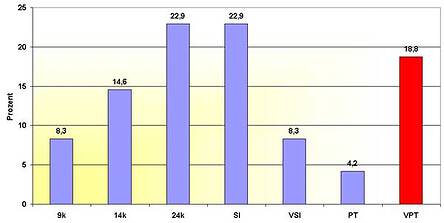 platinum coated flute
platinum coated flute
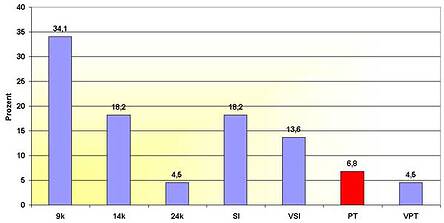
With TEST B, we tried another approach: the test persons listened to one instrument played by all players. They had to describe the sound color and to guess the instrument/material. Then the next instrument played by all players was presented, and so on. Only one instrument (the all-silver flute) was identified correctly, with all other instruments the confusion was perfect! For instance: the 9 k gold flute was mainly misinterpreted as an all-silver instrument, the 14 k gold flute was identified as the platinum instrument and the silver coated instrument was assigned to all instruments (with each instrument at least one test person thought that it is the silver-coated instrument).
The descriptions of the soundcolor for each instrument were separated into 5 categories:
- positive occupied expressions
- negative occupied expressions
- from all persons assigned expressions
- contradictionary expressions
- evaluation of the sound quality (1= very good, 5 = bad)
As expected, the most significant assigned expressions for all instruments were the “contradictionary expressions”: for example, the sound color of each instrument was evaluated as “bright” and simultaneously as “dark” or “full/round” and “thin/sharp”.
The evaluation of the sound quality showed a very small range: the values for all instruments can be found between 2.16 and 2.92. In addition to the evaluation of the sound quality, the test persons were free to use a “+” for “I like it” and a “–” for “I don’t like it”. The following table points out the listeners’ preference depending on the played music.

Conclusion
Objective analyses do not rule out the possibility that the material may have a slight influence on the achievable dynamic range. As far as the timbre is concerned, no indication could be found that the material has any influence on it. At the level of objective sound analysis, a maximum difference of 0.5 dB was measured, which is below the listener's perception threshold. At a maximum of 22%, the recognition rate is far below the statistical average and leads to the conclusion that there is no typical sound caused by the material.
What was not captured in this study is the possibility that a player may be able to realise their idea of an ‘ideal sound’ more easily with a certain instrument than with another instrument. If this is the case, it could explain why different players prefer flutes with different materials. In such cases, the material may well be a criterion when choosing a suitable instrument. This is then a ‘matter’ between the flutist and the instrument. However, the end product ‘sound’ is not influenced by this.
Literature
"Effect of Wall Material on the Steady-State Tone Quality of Woodwind Instruments,"
Journal of the Acoustical Society of America (JASA) 36, 1881-1887.
"Wall vibrations in flue organ pipes and their effect on tone,"
Journal of the Acoustical Society of America 39, 936-945.
"Effect of material on flute tone quality,"
Journal of the Acoustical Society of America 49, 520-523.
The Acoustical Foundations of Music
(W. W. Norton & Company, Inc., New York).
Soundexamples
